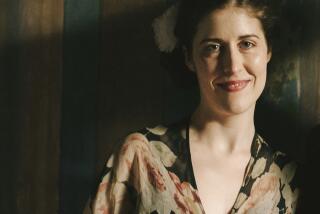Fred L. Whipple, 97; Scientist Found Comets Are ‘Dirty Snowballs’
- Share via
Fred Lawrence Whipple, the last surviving giant of 20th century astronomy and the man who answered the age-old question, “What is a comet?” died Monday at a hospital in Cambridge, Mass.
The Harvard researcher who conceived the notion that comets are “dirty snowballs” and who often answered to the nickname of Dr. Comet was 97.
For the record:
12:00 a.m. Sept. 4, 2004 For The Record
Los Angeles Times Saturday September 04, 2004 Home Edition Main News Part A Page 2 National Desk 1 inches; 43 words Type of Material: Correction
Whipple obituary -- The obituary of scientist Fred Whipple in Wednesday’s California section said he did not live long enough to see the CONTOUR spacecraft arrive at Comet Schwassmann-Wachmann3 in June 2006. That spacecraft failed and was declared lost by NASA in 2002.
He also developed radar-deflecting chaff during World War II, devised a shield to protect spacecraft from meteor damage, and assembled a worldwide network of amateur astronomers that was the only group available to monitor the Russian satellite Sputnik when it was launched in October 1957.
“Fred Whipple was one of those rare individuals who affected our lives in many ways,” Charles Alcock, director of the Harvard-Smithsonian Center for Astrophysics, said Tuesday.
But his first love was comets and he continued working on them until his death. In 1999, when Whipple was in his 90s, he was named to work on NASA’s Comet Nucleus Tour, or CONTOUR, becoming the oldest researcher ever to accept such a post.
Colleagues mourned that he did not live long enough to see the craft’s expected arrival at Comet Schwassmann-Wachmann 3 in June 2006.
Before Whipple began his research, comets were mysterious objects whose origin and composition were unknown. Most people thought that they were piles of sand and rock held together by gravity. Some thought that they were rocks ejected by volcanoes on Saturn and Jupiter. Nobody was sure how they were able to keep throwing off the material that formed their tails.
Whipple’s careful study showed what comets really were.
The key to his discovery was the observation that comets did not obey the simple Newtonian mechanics of other bodies in the solar system. Some arrived at Earth earlier than expected, while others were somehow delayed, indicating that some unknown force was acting on them.
Whipple postulated that comets were simply large masses of ice and rock. He called them “icy conglomerates,” but the term dirty snowball soon took over the public’s imagination. Evaporation of steam produced by the sun’s warming could accelerate the comets if the jets were pointed backward or slow it if they were pointed forward.
To his colleagues, the most surprising thing was that he developed the theory without much data, basing it primarily on intuition and without extensive calculations.
“Unlike other great physicists, he had uncommon common sense,” said astrophysicist Mike Lecar of the Harvard-Smithsonian Center. “He just looked at things with a fresh eye.”
Whipple’s theory was confirmed when the European Space Agency’s Giotto probe visited Halley’s comet in 1986 and photographed geysers of steam erupting.
His two papers in 1950 and 1951 describing the icy conglomerates were the most-cited astronomy papers of the last 50 years, according to a 2003 survey by the Astrophysical Journal.
After taking over as director of the Smithsonian Astrophysical Observatory in 1955, he became known for his shrewd ability as an administrator. Foreseeing the coming age of satellites, he established two tracking programs -- one involving amateur astronomers and a second incorporating 12 wide-field cameras positioned strategically around the world.
When Sputnik was launched, he was the only one who was ready. “All the information about the Sputnik came through the Smithsonian Astrophysical Observatory,” astronomer Brian Marsden of the center said Tuesday.
In 1963, President John F. Kennedy gave Whipple the Award for Distinguished Public Service for his effort.
“I think that was my most exciting moment, when I was able to invite my parents and my family to the Rose Garden for the ceremony,” he said in 2001.
Whipple was born to a farm family in Red Oak, Iowa, in 1906, but his family moved to Los Angeles when he was 15. He attended Occidental College and UCLA, where he majored in mathematics, then received his doctorate from UC Berkeley. Including the war years, when he did research for the government, he spent all of his career at Harvard, where he was a mentor to Carl Sagan and a close friend of Isaac Asimov.
His first job at Harvard was running an observation program at a telescope 30 miles outside Cambridge. He was interested in galaxies, but his then-boss Harlow Shapley claimed them for his own. “So Fred said, ‘I’ll take comets,’ ” Lecar said.
Although Whipple had a car with a COMET license plate, for 50 years he bicycled the three miles from his home in Belmont to his Harvard office.
A back injury seven years ago halted the bicycle rides, but he still walked half a mile each day until he fell and broke his hip in 2002.
At his 90th birthday party, a guest asked about the secret of his longevity. “You’ve got to start early,” he said.
Whipple is survived by his wife of 58 years, Babette, and their two daughters, Sandra and Laura. He also is survived by a son, Earle Raymond, from his first marriage.






